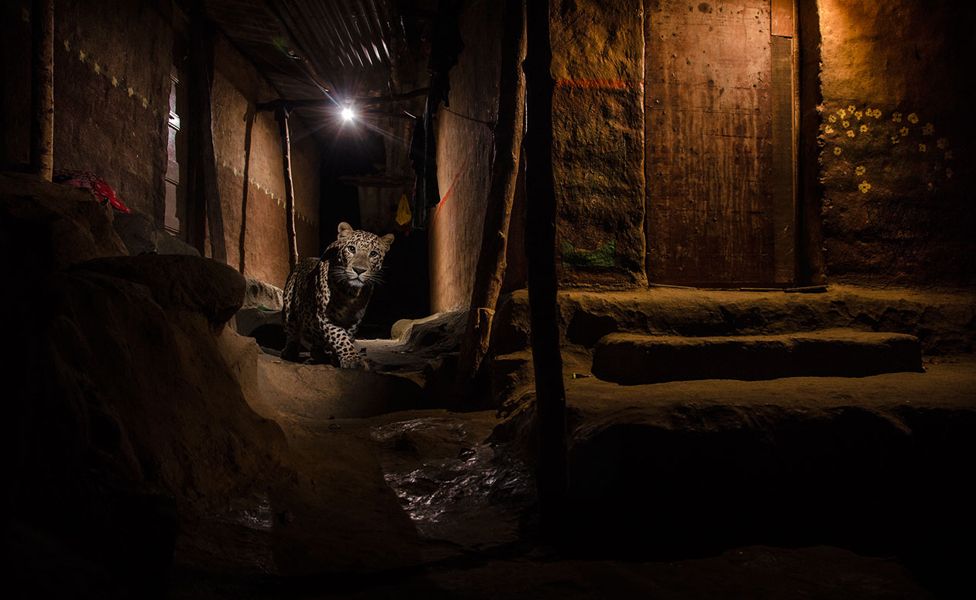
A leopard ghosts through an alley in a suburb of Mumbai bordering Sanjay Gandhi National Park. Leopards often enter the streets at night, which can lead to conflict with humans. This outstanding photo taken by India’s Nayan Khanolkar, was Urban category winner in the Natural History Museum’s 2016 Wildlife Photographer of the Year.
Leopards have been shown to shift territories in areas where tiger conservation in protected areas has allowed the larger species to dominate a habitat. This means that leopards, a highly adaptable species, are pushed into rural and urban areas. Inevitably, this brings them into conflict with people.
Although leopards may adapt and co-habit with tigers and people, depending on the prey-base available to all three species, leopards themselves are the underdogs in these interactions. There is some evidence that leopards adapt with nocturnal dispersal into human landscapes (to avoid contact with the humans already living there). The photograph above is an illustration of this sort of behaviour (other insights in this short clip )
It appears that leopards avoid tigers in space, but humans in time and these differences in behaviour have implications for managing conservation in areas where human-dominated landscapes border leopard and tiger territories.
Further reading:
Carter, N., Jasny, M., Gurung, B. and Liu J. (2015) Impacts of people and tigers on leopard spatiotemporal activity patterns in a global biodiversity hotspot. Global Ecology and Conservation 3(1): 149:162. http://www.sciencedirect.com/science/article/pii/S2351989414000833
Nichols, S. (2014) Conservation targeting tigers pushes leopards to change. Michigan State University http://csis.msu.edu/news/conservation-tigers-pushes-leopard-change
